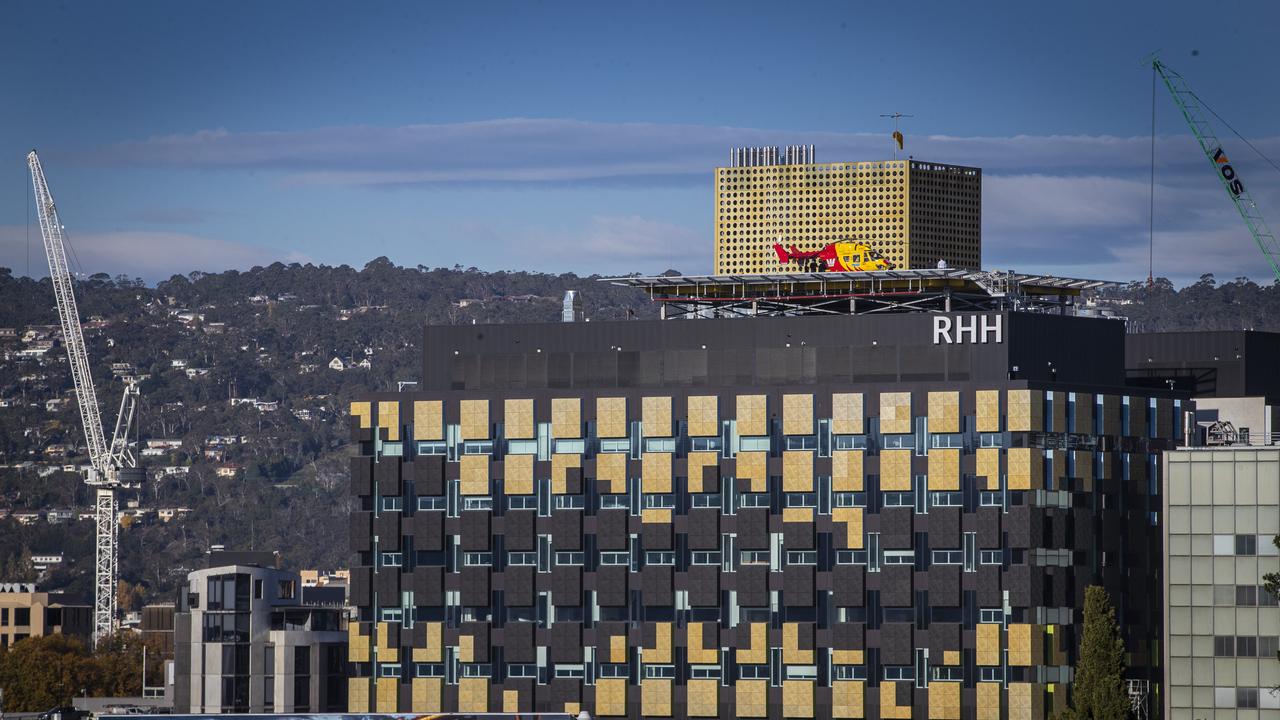Royal Hobart Hospital helipad used almost 30 times since becoming operational in May
Have you heard a helicopter hovering over your house recently? Find out how many patients have touched down on the Royal Hobart Hospital’s new helipad in its first month of operation >>

THE Royal Hobart Hospital’s new helipad has been used about once a day on average since becoming operational last month.
Part of the hospital’s long-awaited K-Block development, the helipad enables high acuity patients to be delivered to critical treatment more quickly.
Ambulance Tasmania’s director of aeromedical and medical retrieval, Simon Brown, said on Wednesday the helipad had been used to transport patients to the RHH 28 times since becoming operational on May 6.

Previously, emergency helicopters took patients to the Domain, from which they were then transported to the hospital via road ambulance.
Dr Brown said of those patients, 21 had been delivered to the helipad directly from emergency scenes or smaller medical centres across the state.
One of the incidents was a crash between a car and a bus at Oatlands on May 19 which left two people with life-threatening injuries.
MORE NEWS:
- Robodebt worker wins compo claim
- Will Chinese students return to Tassie’s shores?
- ‘Why we need new major projects law’
Dr Brown said the helipad enabled aeromedical crews to be dispatched to that scene quickly, while ensuring local ambulance services were freed up to respond to other emergencies.
The remaining seven patients were transferred from other hospitals around the state, including three neonatal cases where newborns were transferred from Launceston, Burnie and Smithton respectively.
“We can get a paediatric team up to the North West very quickly and bring patients back down,’’ Dr Brown said.
“Two of those were from the North-West and one of them was quite a dramatic case.
“When you have a small hospital having to cope with a paediatric emergency, the sooner we can get a team to them and back, is good for the babies.”

Dr Brown said the helipad not only saved valuable time for the patient and for ambulance crews, it also made the system more efficient.
“When you gain system efficiencies and a good efficient movement of patients or direct from a scene, you have improved the efficiency of care,’’ he said.
“For example a patient with a major head injury in the north of the state, if they can go direct from the scene to hospital … you avoid the duplication of them going by road to another hospital.”
Dr Brown said this meant ambulance resources, especially in regional areas, were better freed up to deal with the next emergency.
He said landing on the helipad saved 15 minutes compared to landing at the Cenotaph and transporting the patient to hospital by road ambulance.
“Just that simple 15 minutes has a dramatic multiplier effect on the efficiency of the system,’’ Dr Brown said.


